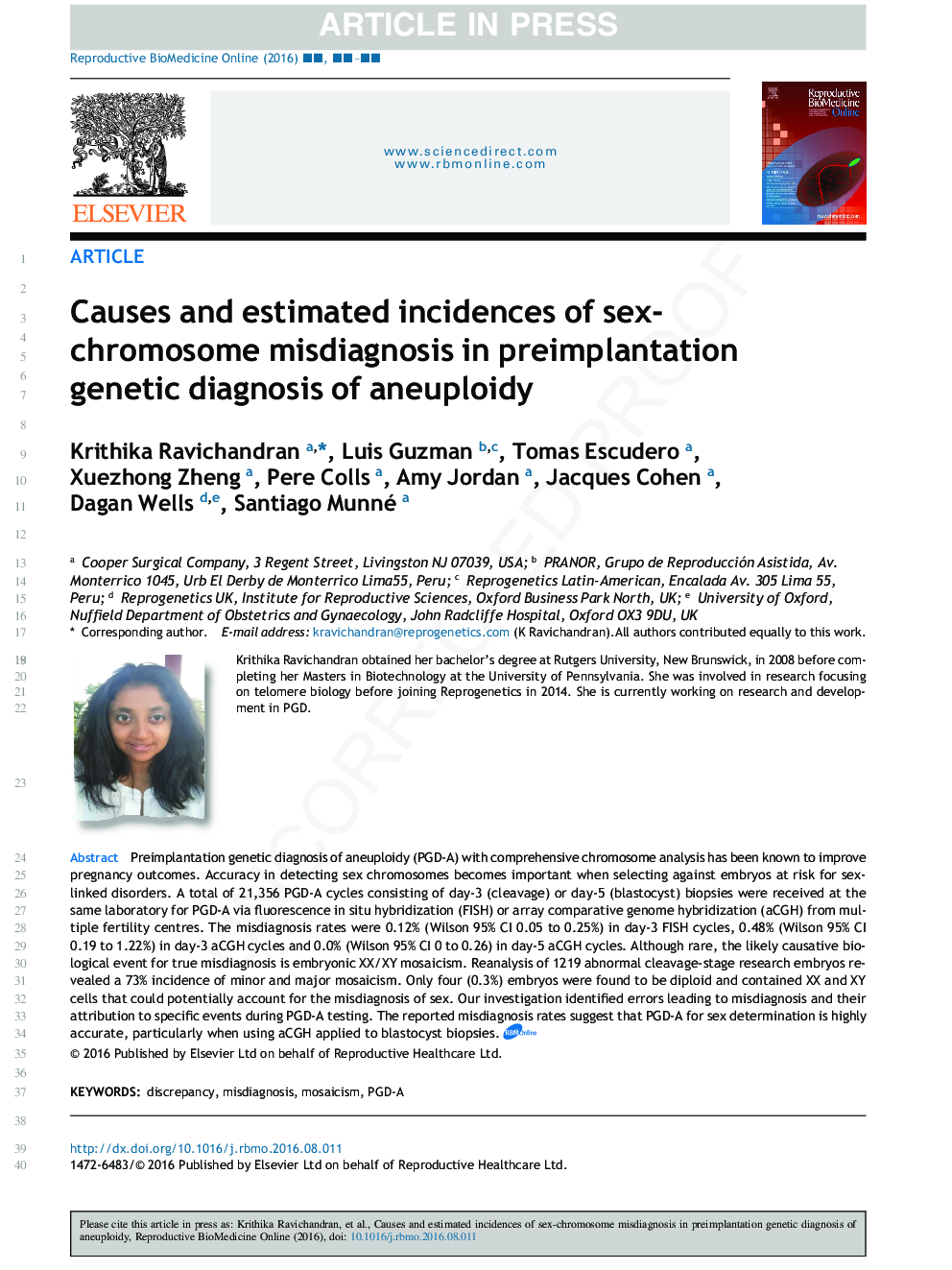| Article ID | Journal | Published Year | Pages | File Type |
|---|---|---|---|---|
| 5696638 | Reproductive BioMedicine Online | 2016 | 10 Pages |
Abstract
Preimplantation genetic diagnosis of aneuploidy (PGD-A) with comprehensive chromosome analysis has been known to improve pregnancy outcomes. Accuracy in detecting sex chromosomes becomes important when selecting against embryos at risk for sex-linked disorders. A total of 21,356 PGD-A cycles consisting of day-3 (cleavage) or day-5 (blastocyst) biopsies were received at the same laboratory for PGD-A via fluorescence in situ hybridization (FISH) or array comparative genome hybridization (aCGH) from multiple fertility centres. The misdiagnosis rates were 0.12% (Wilson 95% CI 0.05 to 0.25%) in day-3 FISH cycles, 0.48% (Wilson 95% CI 0.19 to 1.22%) in day-3 aCGH cycles and 0.0% (Wilson 95% CI 0 to 0.26) in day-5 aCGH cycles. Although rare, the likely causative biological event for true misdiagnosis is embryonic XX/XY mosaicism. Reanalysis of 1219 abnormal cleavage-stage research embryos revealed a 73% incidence of minor and major mosaicism. Only four (0.3%) embryos were found to be diploid and contained XX and XY cells that could potentially account for the misdiagnosis of sex. Our investigation identified errors leading to misdiagnosis and their attribution to specific events during PGD-A testing. The reported misdiagnosis rates suggest that PGD-A for sex determination is highly accurate, particularly when using aCGH applied to blastocyst biopsies.
Related Topics
Health Sciences
Medicine and Dentistry
Obstetrics, Gynecology and Women's Health
Authors
Krithika Ravichandran, Luis Guzman, Tomas Escudero, Xuezhong Zheng, Pere Colls, Amy Jordan, Jacques Cohen, Dagan Wells, Santiago Munné,
